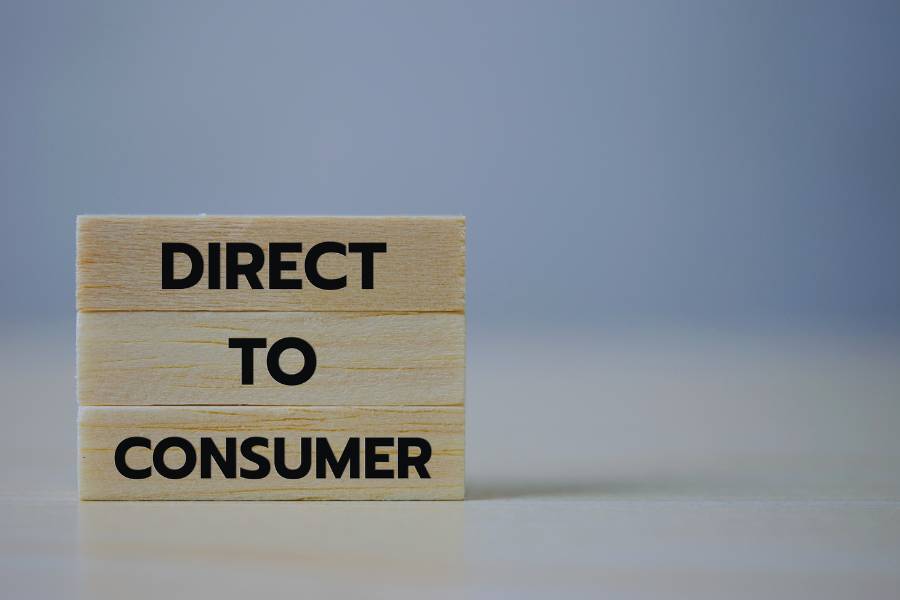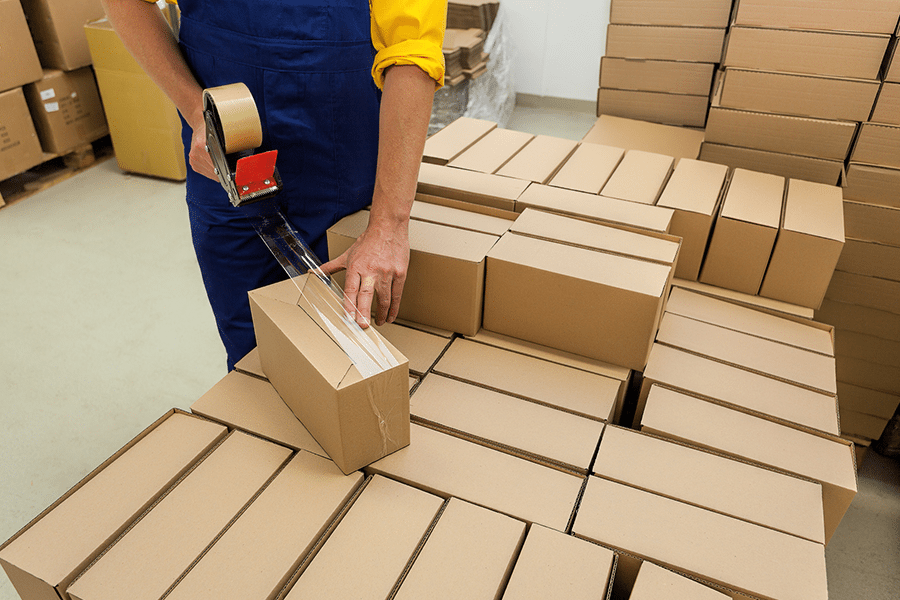
Direct-to-consumer or DTC ecommerce is a retail model where a business designs, creates, and sells its own products directly to the end consumer. This requires the business to take the reins on the entire process, from product development through to fulfillment.
In this post, learn all about DTC fulfillment and how to set it up for your small business.
Key Takeaways:
- The direct-to-consumer business model is growing in popularity.
- Owning your own fulfillment operations, in conjunction with the rest of the process from product development through consumer sales, gives you the most control over your customer experience, brand, and data.
- DTC fulfillment may have higher upfront costs, but also potential for long-term profitability and growth.
What Is DTC Fulfillment?
DTC fulfillment is the process of delivering products directly from a brand to the end consumer, bypassing traditional retail channels. This model has gained significant popularity, especially over the last decade or so with all the user-friendly ecommerce platforms available, and the push for brands to establish a closer relationship with customers.
DTC is growing, so it’s increasingly important to consider DTC fulfillment in your business strategy. In fact, more than 58% of supply chain professionals believe DTC will account for more than half of overall sales by 2026. Two-thirds have even increased their investments in DTC fulfillment over the past three years.
How DTC Fulfillment Works
Here’s a breakdown of how the DTC fulfillment model works, especially in comparison to traditional retail fulfillment:
Product Procurement
The process starts with the business sourcing or manufacturing its products. This could involve designing and producing products in-house or partnering with manufacturers.
If you haven’t yet figured out what products you are selling or how to produce them, consider these guides:
Online Sales Channels
In a DTC business, many of the customer touchpoints happen online. In fact, DTC brands typically get their start on their own ecommerce website.
They may also use other online sales channels like mobile apps, social commerce, and online marketplaces to showcase and sell their products directly to consumers. These platforms provide a digital storefront where customers can browse, select, and purchase items.
Read more:
- How to Start an Online Store
- Designing Ecommerce Websites in 2024
- Ecommerce UX Best Practices
- How to Sell on Etsy
Order Processing
Customers visit the business’s online platform, browse through available products, and add desired items to their shopping carts. When they’re ready to make a purchase, they proceed to the checkout process, where they provide shipping information and payment details.
Upon receiving an order, the business’s fulfillment system processes the transaction, verifies payment, and generates an order confirmation for the customer. This triggers the fulfillment process to begin.
Picking & Packing
Warehouse staff or automated systems retrieve the ordered items from inventory shelves and assemble them for shipping. They carefully pack the products, ensuring they’re adequately protected during transit.
Related:
- How to Choose Packaging for a Product
- Ecommerce Shipping & Handling Guide
- Cheapest Way to Ship a Package
- Sources for the Best Custom Mailer Boxes & Packaging
Shipping & Delivery
Once packed, the orders are handed over to shipping carriers (like FedEx, UPS, or USPS) for delivery to the customer’s specified address. DTC brands might offer different shipping options, like standard, expedited, or same-day delivery, depending on customer preferences and the business’s logistics capabilities.
It’s also a good idea to provide tracking information to customers. They can receive shipping notifications and tracking information, allowing them to monitor the status of their orders on their own. This transparency helps manage expectations and provides peace of mind to customers awaiting their deliveries while mitigating customer support inquiries.
DTC Fulfillment Strategies
For small businesses looking to implement DTC fulfillment strategies, here are several options:
In-house Shipping
With in-house shipping, the DTC business manages all aspects of the fulfillment process internally, from receiving orders to packing and shipping them out. This provides maximum control over the entire fulfillment process, allowing the brand to maintain quality standards and respond quickly to customer needs.
Third-party Logistics
Third-party logistics (3PL) shipping involves outsourcing the fulfillment process to an external party. These providers specialize in warehousing, picking, packing, and shipping orders on behalf of businesses, allowing DTC brands to focus on core activities like product development and marketing. Many DTC brands go this route.
Dropshipping
Dropshipping involves partnering with third-party suppliers or manufacturers to fulfill orders directly to customers. It eliminates the need for inventory management and allows businesses to focus on marketing and customer service.
Customer Pickup
Setting up a customer pickup flow can look many different ways. However, two of the most popular options are:
- Pop-up shops: Set up temporary retail locations or participate in local events to allow customers to pick up their products, especially if you have a lot of orders in a concentrated location. Pop-up shops offer the opportunity to engage with customers face-to-face and create buzz around the brand.
- Click and collect: This method allows customers to order products online and pick them up from a physical location, such as a store or designated pickup point. Click and collect—or buy online, pick up in-store (BOPIS)—combines the convenience of online shopping with the immediacy of in-store pickup.
Benefits of DTC Fulfillment
Though a DTC business model comes with challenges and legwork, the payoff can be rewarding. This is true for the fulfillment leg of your operation as well.
Ownership of Customer Relationships
In traditional fulfillment, the retailer often owns the primary relationship with the customer. So if you don’t own a retail store but sell your products at other retail stores, that retailer is the main point of contact with the customer. You have less control over the customer experience, as it’s mediated through the retailer.
But with DTC, you have direct ownership of the customer relationship. You control the entire customer experience, from browsing and purchasing to post-sale support. This benefit is actually a main driver for businesses adopting DTC fulfillment. In fact, nearly half of businesses prioritize DTC to build stronger customer relationships, and 44% do so to get a better understanding of their shoppers.
Complete Brand Control
Similarly, DTC gives you full control over brand image, messaging, and pricing. You can tailor the online shopping experience to align with brand identity. Whereas traditional fulfillment gives limited control over how your products are presented and sold in retail stores. Pricing and branding decisions may also be influenced by the retailer.
Data Insights Spanning the Entire Supply Chain
Direct sales provide brands with valuable data insights into consumer behavior, preferences, and purchasing patterns. This data can inform product development, marketing strategies, and personalized customer experiences. Nearly a third of businesses use DTC as a way to access more customer data that can inform retail business strategy.
Brands often have less access to direct consumer data in traditional fulfillment models. They rely on retailers to provide insights, which may not be as detailed or timely.
DTC Fulfillment Challenges
DTC fulfillment isn’t without obstacles. Plan for the following potential challenges:
Distribution Channel
In traditional fulfillment, products usually go through a complex supply chain involving wholesalers, distributors, and retailers before reaching the end consumer. But in DTC fulfillment, products are typically shipped directly from the manufacturer’s warehouse or fulfillment center to the consumer’s doorstep.
This cuts out intermediaries like wholesalers, distributors, and retailers. So you might ship orders directly from your warehouse to the end consumer, rather than to a retail store, for example.
Inventory Management
Inventory management is mission-critical. Once the products are ready, the business maintains inventory either in its own warehouse or through third-party fulfillment centers.
Inventory management systems help track stock levels, monitor product movement, and ensure availability for customers. More than three-quarters of businesses say a warehouse management system would drive more DTC sales, and 69% believe it would increase profitability. Another 35% say maintaining real-time visibility for all their inventory locations is imperative to meeting customer expectations of a DTC brand.
Logistics & Fulfillment Costs
While DTC fulfillment can involve higher upfront costs for establishing ecommerce infrastructure and fulfillment centers, it can potentially be more cost-effective in the long run.
Traditional fulfillment often involves lower upfront costs for brands, as it relies on existing retail infrastructure. But the margins taken by intermediaries can reduce profitability, and this can really add up over time.
Bottom Line
By taking control of the entire process from product procurement to delivery, you can have complete control over your brand, customer relationships, and data through DTC fulfillment. Although DTC fulfillment may involve higher upfront costs compared to traditional fulfillment models, the potential for increased profitability and long-term growth makes it a great option for businesses looking to adapt and grow.


![accounting-software-implementation-guide-[+-free-checklist]](https://zabollah.com/wp-content/uploads/2024/04/13802-accounting-software-implementation-guide-free-checklist.jpeg)

